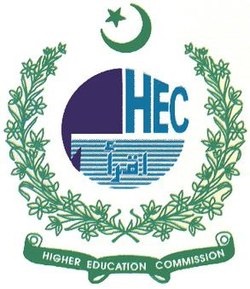Trade Openness and Economic Growth in Pakistan: The Role of Institutions
DOI:
https://doi.org/10.61506/01.00463Keywords:
trade openness, economic growth, institutionsAbstract
More generally, the study has jumped on the bandwagon to disentangle some of the many ingredients of economic growth by exploring how institutional factors influence economic ones. We utilize time series data spanning from 1984 to 2022, which facilitates our analysis of the correlations between various variables. We draw the conclusions using the Auto Regressive Distributed Lag (ARDL) model. Long-run effects on economic growth are present and significant both from government spending-trade openness and corruption perspectives, where trade openness can have a positive impact as well. Factors such as population, gross fixed capita formation, government stability, and inflation shape the net effect on economic growth over time. One of these factors is the institutional variable of government stability, which positively influences economic growth. Furthermore, the process of controlling corruption results in economic contraction. This implies that the higher the level of corruption control, the faster economic growth will occur.
References
Acemoglu, D., Johnson, S., Robinson, J., & Thaichareon, Y. (2003). Institutional causes, macroeconomic symptoms: Volatility, crises and growth. Journal of Monetary Economics, 50, 49–123. DOI: https://doi.org/10.1016/S0304-3932(02)00208-8
Acemoglu, D., & Johnson, S. (2005). Unbundling institutions. Journal of Political Economy, 113, 949–995. DOI: https://doi.org/10.1086/432166
Acemoglu, D., Johnson, S., & Robinson, J. A. (2001). The colonial origins of comparative development. American Economic Review, 91(5), 1369–1401. DOI: https://doi.org/10.1257/aer.91.5.1369
Acemoglu, D., Johnson, S., & Robinson, J. A. (2002). Reversal of fortune: Geography and institutions in the making of the modern world income distribution. Quarterly Journal of Economics, 117, 1231–1294. DOI: https://doi.org/10.1162/003355302320935025
Ahmed, M. U., & Pulok, M. H. (2013). The role of political stability on economic performance: The case of Bangladesh. Journal of Economic Cooperation and Development, 34(4), 61–100.
Aisen, A., & Veiga, F. J. (2013). How does political instability affect economic growth? European Journal of Political Economy, 29, 151–167. DOI: https://doi.org/10.1016/j.ejpoleco.2012.11.001
Alguacil, M., Cuadros, A., & Orts, V. (2011). Inward FDI and growth: The role of macroeconomic and institutional environment. Journal of Policy Modelling, 33, 481–496. DOI: https://doi.org/10.1016/j.jpolmod.2010.12.004
Ayub, M., Azman-Saini, W. N. W., Laila, N., Mongid, A., & Ismail, W. Z. W. (2019). Foreign direct investment and economic growth: The role of democracy. International Journal of Economics and Management, 13, 481–493.
Ayub, M., Azman-Saini, W. N. W., Naseem, N. A. M., Mazlan, N. S., & Laila, N. (2020). Regime durability and foreign direct investment-growth nexus in developing countries. International Journal of Economics & Management, 14(3).
Azman-Saini, W. N. W., Baharumshah, A. Z., & Law, S. H. (2010). Foreign direct investment, economic freedom and economic growth: International evidence. Economic Modelling, 27(5), 1079–1089. DOI: https://doi.org/10.1016/j.econmod.2010.04.001
Bengoa, M., & Sanchez-Robles, B. (2003). Foreign direct investment, economic freedom and economic growth: New evidence from Latin America. European Journal of Political Economy, 19, 529–545. DOI: https://doi.org/10.1016/S0176-2680(03)00011-9
Buchanan, B. G., Le, Q. V., & Rishi, M. (2012). Foreign direct investment and institutional quality: Some recent empirical evidence. International Review of Financial Analysis, 21, 81–89. DOI: https://doi.org/10.1016/j.irfa.2011.10.001
Jalilian, H., Kirkpatrick, C., & Parker, D. (2007). The impact of regulation on economic growth in developing countries: A cross-country analysis. World Development, 35(1), 87–103. DOI: https://doi.org/10.1016/j.worlddev.2006.09.005
Karolyi, G., & Martell, R. (2010). Terrorism and the stock market. International Review of Applied Financial Issues and Economics, 2, 285–314.
Kauffman, D., Kraay, A., & Mastruzzi, M. (2005, May). Governance matters IV: Governance indicators for 1996–2004. World Bank Policy Research. DOI: https://doi.org/10.1596/1813-9450-3630
La Porta, R., Lopez-de-Silanes, F., Shleifer, A., & Vishny, R. (2002). Investor protection and corporate valuation. The Journal of Finance, 57(3), 1147–1170. DOI: https://doi.org/10.1111/1540-6261.00457
Meon, P.-G., & Sekkat, K. (2004). Does the quality of institutions limit the MENA’s integration in the world economy? World Economy, 27, 1475–1498. DOI: https://doi.org/10.1111/j.0378-5920.2004.00661.x
Meon, P.-G., & Weill, L. (2006). Does better governance foster efficiency? An aggregate frontier analysis. Economics of Governance, 6(1), 75–90. DOI: https://doi.org/10.1007/s10101-004-0080-z
Moers, L. (1999). How important are institutions for growth in transition countries? Tinbergen Institute Discussion Paper, 99-004/2, Amsterdam.
North, D. C. (1990). Institutions, institutional change and economic performance. Cambridge, England: Cambridge University Press. DOI: https://doi.org/10.1017/CBO9780511808678
North, D. C. (1991). Institutions. Journal of Economic Perspectives, 5(1), 97–112. DOI: https://doi.org/10.1257/jep.5.1.97
North, D. C., & Thomas, R. P. (1973). The rise of the Western world: A new economic history. Cambridge University Press. DOI: https://doi.org/10.1017/CBO9780511819438
Olson, M., Sarna, N., & Swamy, A. V. (1998). Governance and growth: A simple hypothesis explaining cross-country differences in productivity. Centre for Institutional Reform and Informal Sector (IRIS), University of Maryland.
Rodrik, D. (2000). Institutions for high-quality growth: What they are and how to acquire them. NBER Working Paper No. 7540. National Bureau of Economic Research, MA. DOI: https://doi.org/10.3386/w7540
Rodrik, D., & Subramanian, A. (2003). The primacy of institutions. Finance and Development, 40, 31–34.
Rodrik, D., Subramanian, A., & Trebbi, F. (2004). Institutions rule: The primacy of institutions over geography and integration in economic development. Journal of Economic Growth, 9(2), 131–165. DOI: https://doi.org/10.1023/B:JOEG.0000031425.72248.85
Roe, M., & Siegel, J. (2011). Political instability: Effects on financial development, roots in the severity of economic inequality. Journal of Comparative Economics, 39(3), 279–309. DOI: https://doi.org/10.1016/j.jce.2011.02.001
Singh, S., Dass, A., Jain, S., Varma, S., Bannerjee, A. K., & Sharma, B. K. (1998). Fatal non-bacterial thrombotic endocarditis following viperine bite. Internal Medicine, 37(3), 342–344. DOI: https://doi.org/10.2169/internalmedicine.37.342
Soto, H. D. (1989). The other path: The invisible revolution in the Third World. New York: Harper & Row.


